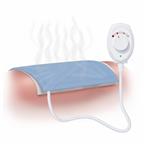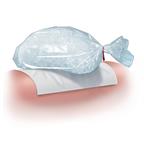Spasticity
Spasticity is a condition in which your muscles contract suddenly and unpredictably (spasm). Spasticity usually affects your arms, legs, or back. It can also affect the way you walk.
Spasticity can range from mild muscle stiffness and tightness to severe, uncontrollable muscle spasms. Severe spasticity can be painful and can freeze your muscles in an uncomfortable position.
Follow these instructions at home:
Managing muscle stiffness and spasms
Activity
-
Stay active as directed by your health care provider. Find a safe exercise program that fits your needs and ability.
-
Maintain good posture when walking and sitting.
-
Work with a physical therapist to learn exercises that will stretch and strengthen your muscles.
-
Do stretching and range-of-motion exercises at home as told by a physical therapist.
-
Work with an occupational therapist. This type of health care provider can help you function better at home and at work.
-
If you have severe spasticity, use mobility aids, such as a walker or cane, as told by your health care provider.
General instructions
-
Watch your condition for any changes.
-
Wear loose, comfortable clothing that does not restrict your movement.
-
Wear closed-toe shoes that fit well and support your feet. Wear shoes that have rubber soles or low heels.
-
Take over-the-counter and prescription medicine only as told by your health care provider.
-
Keep all follow-up visits as told by your health care provider. This is important.
Contact a health care provider if you:
-
Have worsening muscle spasms.
-
Develop other symptoms along with spasticity.
-
Have a fever or chills.
-
Experience a burning feeling when you pass urine.
-
Become constipated.
-
Need more support at home.
-
Have trouble breathing.
-
Have a muscle spasm that freezes you into a painful position.
-
Cannot walk.
-
Cannot care for yourself at home.
-
Have trouble passing urine or have urinary incontinence.
Summary
-
Spasticity is a condition in which your muscles contract suddenly and unpredictably (spasm). Spasticity usually affects your arms, legs, or back.
-
Spasticity can range from mild muscle stiffness and tightness to severe, uncontrollable muscle spasms.
-
Do stretching and range-of-motion exercises at home as told by a physical therapist.
-
Take over-the-counter and prescription medicine only as told by your health care provider.
This information is not intended to replace advice given to you by your health care provider. Make sure you discuss any questions you have with your health care provider.

